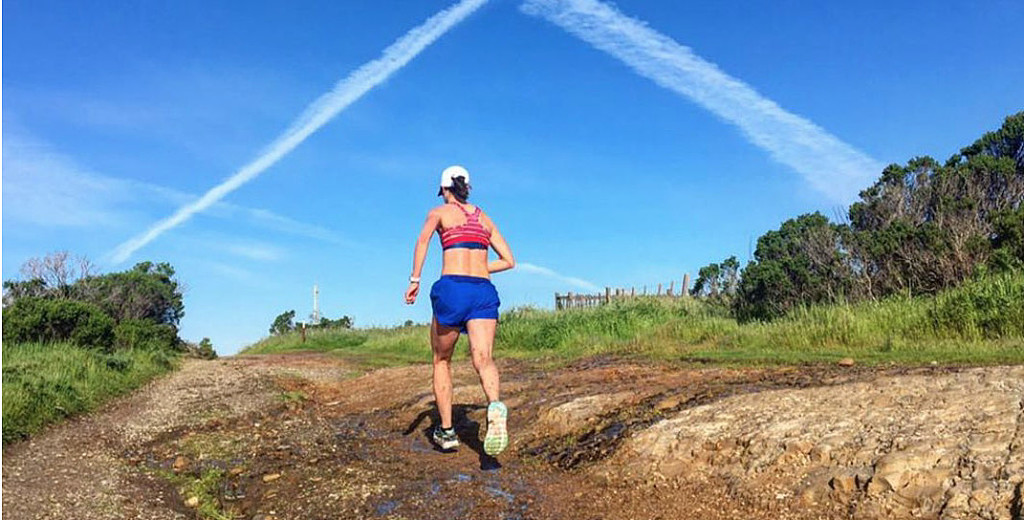Running News Daily
Running News Daily is edited by Bob Anderson in Mountain View, California USA and team in Thika Kenya, La Piedad Mexico, Bend Oregon, Chandler Arizona and Monforte da Beira Portugal. Send your news items to bob@mybestruns.com Advertising opportunities available. Over one million readers and growing. Train the Kenyan Way at KATA Running Retreat Kenya. (Kenyan Athletics Training Academy) in Thika Kenya. Opening in june 2024 KATA Running retreat Portugal. Learn more about Bob Anderson, MBR publisher and KATA director/owner, take a look at A Long Run the movie covering Bob's 50 race challenge.
Index to Daily Posts · Sign Up For Updates · Run The World Feed
Use Threshold Training to Run Faster, Longer
The primary purpose of training is to enable your body hold a faster pace for a longer time. The first step toward getting faster is building an aerobic base of easy miles and improving running economy through strides and short intervals. After you’ve developed a base, the best way to go faster for longer is through threshold training.
Mention threshold training in a group of coaches, and an Anchorman-like rumble will erupt in a minute or two. If you search threshold-training philosophy online, keywords like “tempo” and “steady state” seem to mean slightly different things to everyone. But there’s no need for things to escalate quickly into a brawl over slight disagreements on terminology, since the basic principles are universal.
What do we mean by threshold?
Contrary to conventional wisdom, lactate is a fuel source, not a boogeyman that forces you to slow down. However, it is associated with waste products that force you to slow down, so for most runners it’s a distinction without a difference. Lactate threshold (LT) is the tipping point when your body produces more lactate than it can use and waste products accumulate without being cleared.
Similar to LT, anaerobic threshold (AnT) measures the point at which your body starts burning glycogen rather than fat as its primary fuel source. AnT and LT are often close to one another, and most athletes can probably get by without differentiating them.
In lieu of lab testing, LT usually corresponds to an effort you could hold for about an hour, though it varies based on physiology, training background and the LT definition you prefer. It should feel somewhat hard, a seven or eight out of 10 on the perceived exertion scale, where you can talk in short sentences, but not sing.
You can calculate your LT heart rate (LTHR) by doing a 30-minute time trial. At 10 minutes, lap out your watch—the average heart rate for the final 20 minutes is your LTHR.
Why do we care about lactate threshold?

Lactate threshold is often the most important element in determining running success in long-distance races, even at races far longer than an hour. The power of LT likely comes from a few factors. First, it is trainable, meaning well-trained athletes will have higher LTs and will run faster in races (whereas VO2 max is less willing to budge). Second, exceeding LT results in relatively rapid onset of fatigue, so improving LT raises the “point of no return.” Finally, LT is usually associated with performance at lower levels of exertion like aerobic threshold and even more intense exertion levels, like VO2 max.
What matters is how fast you can run at your LT, or your velocity at LT (vLT). On trails, vLT gets a bit more complicated, mixing how fast you can run on flat ground with your ability on hills and technical terrain.
How can we improve vLT on trails?
High-volume aerobic training can improve LT the most. So before worrying too much about intricate workouts, build aerobic volume at “Zone two.” Zone two itself is subject to debate, but you can think of it as an aerobic intensity that is a five or six on the perceived exertion scale, or easy to easy-moderate exertion where you can comfortably hold a conversation. For my athletes, we use 81 to 89 percent of LTHR.
For most athletes, at least 80-percent of your training should be aerobic. Add fast strides and short intervals to aerobic training to improve running economy, and you are ready for intervals that directly target LT. The extent of aerobic training depends on your background and goals, but most athletes should spend at least a few weeks doing easy running before jumping into harder workouts.
Now is when “threshold” or “tempo” running comes in. Remember, tempo usually corresponds with the effort you could sustain for about an hour. It’s not a race—by training at LT, rather than going as fast as you can, you can elicit more improvement. The general principle is to run 20 to 45 minutes at LT over the course of a workout, broken up as needed, on terrain that suits your goals.
What are examples of LT workouts?
Within those general constraints—20 to 45 minutes at LT—LT workouts can take any form. You can do the LT workout in one tempo run, or over the course of intervals with half the recovery time or less (Coach Jack Daniels would call these “cruise intervals”). Here are five examples (do 20 minutes of easy running before and after each workout).
The Steady Freddie: Thirty minutes at LT on terrain similar to your race. This workout is hard, but not so taxing that you’ll need to be scraped off the trail with a spatula. You can also take a couple minutes of easy running recovery in the middle. This workout is simple and achievable, good for all levels.
The Cruisey Susie: Six to eight x 4 minutes at LT with two minutes of easy recovery. This “cruise interval” workout is an ideal intro to LT training, since the recovery periods make it comfortable. It has the benefit of making sure you are running fast at LT, since many trail runners will have biomechanical fatigue with sustained efforts that is lessened with shorter intervals. Don’t go too fast, even though you’ll be tempted to.
The Crooked Buzzsaw: Eight to 12 x 3 minutes uphill at LT with one minute of jog down recovery. For this workout, you need a long hill. This workout is relatively low stress, with reduced pounding, so is a great option for low volume runners or runners over 50.
Like Riding a Bike: Two x 20 minutes at LT with five minutes of easy recovery. This workout mimics the classic bike workout designed to improve power. Since the physiological principles are the same, it’s also one of the best run workouts, but comes with additional injury risk since 40 minutes at LT running involves lots of pounding on your legs. Only advanced runners should do the full workout.
Ladder to Heaven: 1/2/3/4/5/4/3/2/1 minutes at LT with one minute easy recovery. This workout is similar to the Cruisey Susie, but with some variation in interval length that keeps it fresh. Ladders are a great option to optimize time at LT while keeping the run interesting.
When are LT workouts most beneficial?
The goal is to train your body to go faster at LT, so it’s essential to do LT workouts rested and ready, providing enough recovery time afterward for adaptation. In general, do no more than two LT workouts each week. For trail runners, a great option is to embed a LT workout within a weekend long run. For example, the Crooked Buzzsaw (30 minutes at LT) can be added in the middle of a two- or three-hour run. Like all training, LT workouts have diminishing returns, so after four to six weeks, mix up your training, emphasizing more intense VO2 max efforts or longer aerobic threshold training.
Smooth is sustainable. Lactate-threshold training helps make your smooth pace faster, which means you’ll be able to sustain faster paces on race day.
(06/19/2021) Views: 824 ⚡AMP
by Trail Runner Magazine




